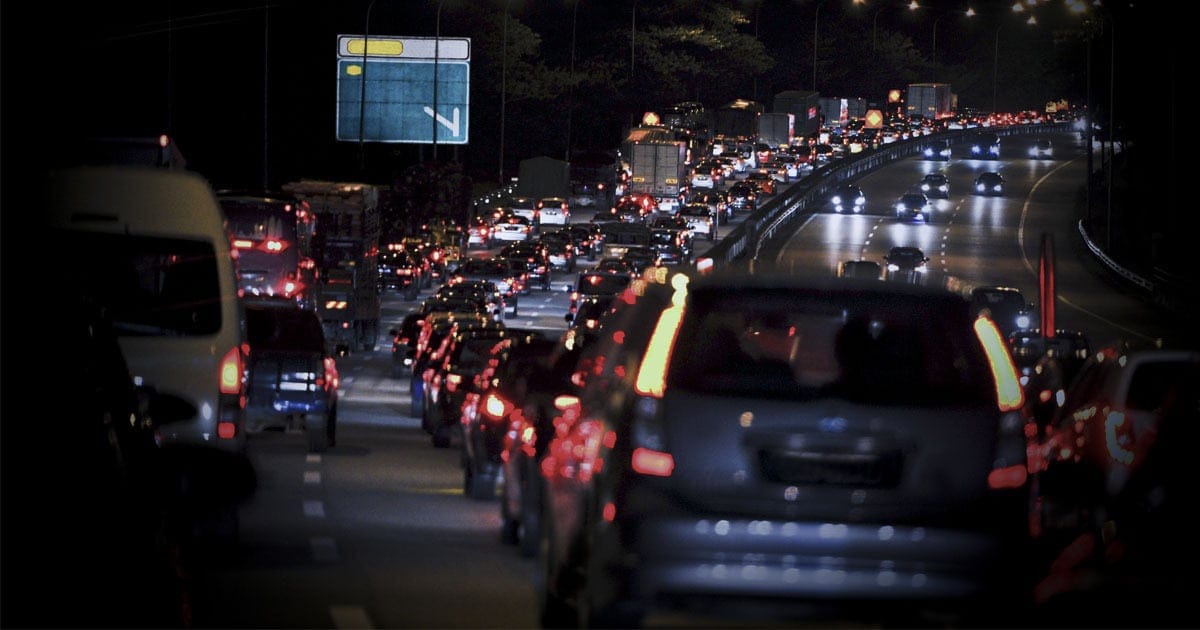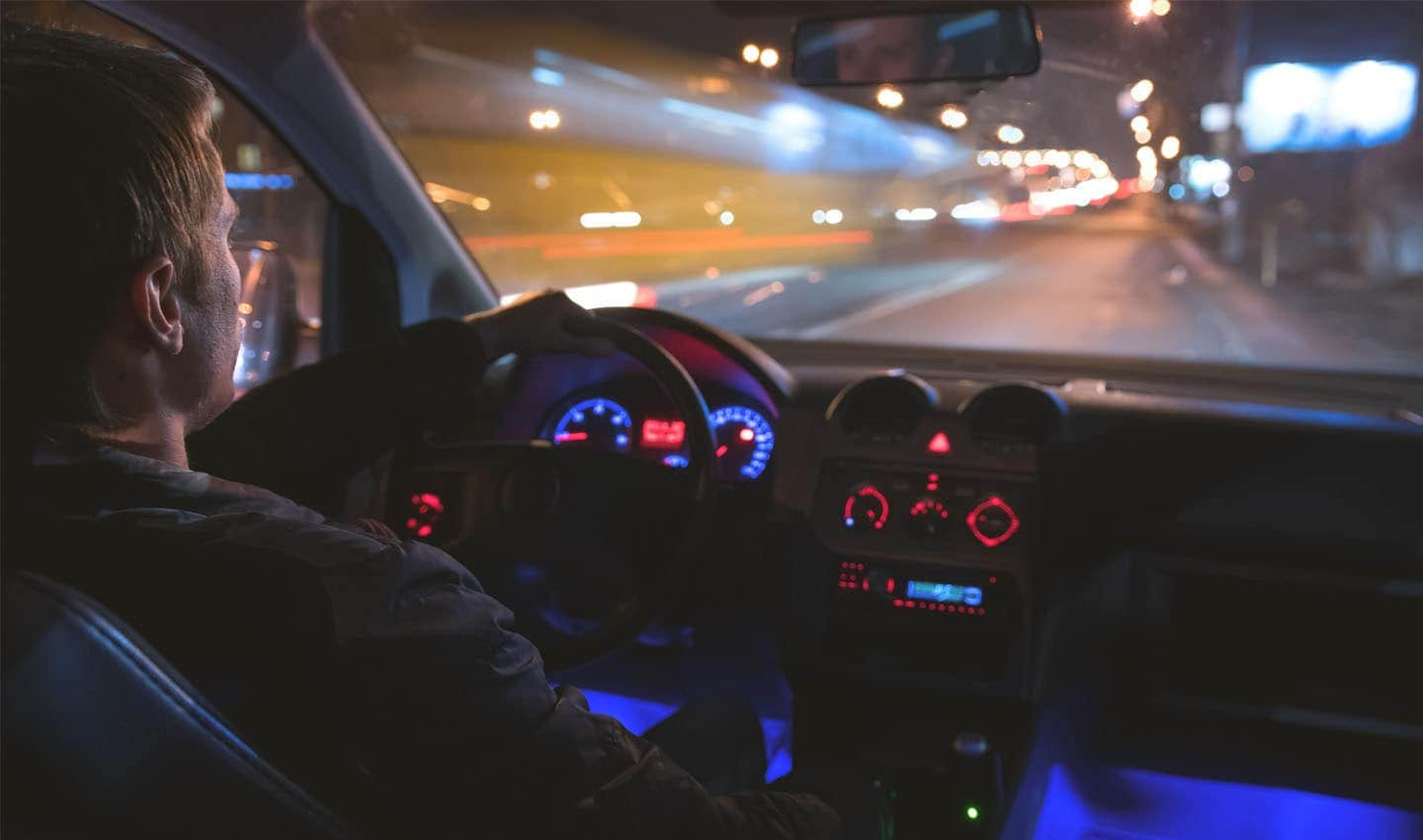
Many people face long nights at work. Truck drivers, security guards, healthcare professionals. Jobs that are fundamental to society and to the health, wellbeing and comfort of the general population. As a result, getting behind the wheel while feeling tired is not uncommon. It’s something most drivers have probably done. It can be incredibly dangerous, unless we find a way to warn drivers when their tiredness has become too severe and is impairing their driving.
For some who find themselves getting drowsy, a brief state of unconsciousness, called a microsleep, may occur. In these instances, the driver might still even have their eyes open, but they are not in proper control of their vehicle. Exhaustion can be as bad as driving under the influence of alcohol. Research has shown that 24 hours of sleep deprivation causes the same level of impairment as someone whose blood alcohol (BAC) level is at 0.10% — a number that’s over the legal limit.
There are safeguards in place for those whose jobs rely on long periods of driving. For example, truck drivers are forbidden from driving past 14 hours after their shift starts. But for the average driver, there are no such safeguards. Drowsiness is a significant cause of accidents, with studies finding that loss of concentration is responsible for 25% of road accidents. Preventing drowsy drivers from getting behind the wheel is important. Being able to detect drowsy drivers and remind them to be safe and take a break if they’re feeling sleepy is one way to address this issue. But how is it done?
Drowsiness detection works to prevent accidents created by microsleep, fatigue and lack of attention. Driver drowsiness detection systems generally come as one tool, one part of Advanced Driver Assistance Systems (ADAS). These are various programs and technologies designed to make driving safer and lessen the chances of human error resulting in catastrophic road traffic incidents. These can range from warning drivers if there’s something in their blind spot, to automatic emergency braking.
Driver drowsiness detection systems can use cameras, eye tracking sensors and other hardware to monitor visual cues, where drowsiness can be detected through yawning frequency, eye-blinking frequency, eye-gaze movement, head movement and facial expressions. The systems can also monitor driving input behavior to notice when there are erratic steering movements, pedal use and lane deviations.
How drowsiness is ascertained: The tiredness index
Once the system has established that the driver’s movements are erratic and they don’t seem alert, other factors may then be taken into account. For example, the drowsiness detector might analyze the speed of the car, time of day, weather conditions and so on. After doing so, it can calculate the ‘tiredness index’ of the driver and begin to take action, such as making an audible noise to alert the driver. Bosch’s driver drowsiness detection uses 70 different signals in order to determine how drowsy the driver might be.
Different car models have different systems, but in most cases the driver will be alerted to their potential drift of attention with some sort of noise, or vibration of the steering wheel or seat. The system may also remind the driver to take a break, especially if they have been on the road for an extended period of time.

Drivers will be alerted to their drift in attention with some sort of noise or vibration.
Different systems for different cars
The phrase ‘driver drowsiness detection’ is the general term for systems that monitor driver attention. Mercedes-Benz calls it ‘Attention Assist’, Land Rover calls its system ‘Driver Condition Monitor’. Volvo’s system, called ‘Driver Alert’, has been shown to be successful, with a 97% success rate at determining a driver’s drowsiness. There are other independent devices that the driver can place in their vehicle themselves, which help to reduce the risks associated with loss of concentration while driving. The ‘Anti-Sleep Pilot’ is a device that continuously calculates a driver’s fatigue levels using 26 different parameters, with the device resting on your dashboard.
Wearable tech has also been released, in the form of caps, vests, wristbands and eyewear. Aimed at truck drivers, they monitor a variety of signals from the driver that can be used to detect if the driver is nodding off. ‘Vigo’ is an up-close-and-personal device, with a headset that rests just beneath the driver’s eyeline to analyze their head movements. Other forms of monitoring a driver’s alertness is through using cameras – although this is less popular due to privacy concerns.
ADAS continues to grow
ADAS tech, like driver drowsiness detection systems, is becoming the standard in cars today. In 2015, US carmakers pledged to have many types of ADAS equipment as standard by 2022, this is a sign of the times, as technology becomes more vital to assisting drivers and increasing road safety. Some believe this technology will also lay the path to full autonomy too, which in an ideal world will make driving even safer still.
When we do have fully autonomous cars, we will be able to put our worries about microsleep and drowsy drivers to one side. However, until then, losing attention at the wheel can be a deadly mistake, and one that driver drowsiness detection works to prevent.
People also read
)
How augmented reality creates a seamless driving experience
)
Cars of the future will be defined by their software
)
What’s next for ADAS
* Required field. By submitting your contact details to TomTom, you agree that we can contact you about marketing offers, newsletters, or to invite you to webinars and events. We could further personalize the content that you receive via cookies. You can unsubscribe at any time by the link included in our emails. Review our privacy policy. You can also browse our newsletter archive here.
)